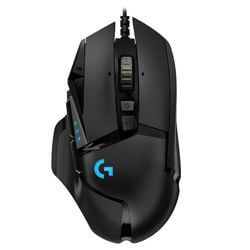 |
 |
|
| Diamondback | G502 Hero | |
| Specification: | ||
| No. of Buttons: | 7 | 11 |
| No. of Macro Keys: | ||
| No. of Game Profiles: | Via Software | 5 onboard |
| Connection: | USB | USB |
| Cable length: | 2.1 m, braided fiber | 2.1m Braided cable |
| Wireless: | No | |
| Battery: | No | |
| Colour: | Black | Black |
| Ambidextrous: | Yes | Right Handed |
| Coating: | ||
| Software: | Synapse | Logitech Gaming Software |
| Weights: | No | up to 18g (5x3.6g) |
| Switch: | ||
| Feet: | ||
| Sensor: | ||
| Type: | Laser | Optical |
| Brand: | ||
| Model: | Hero | |
| Processor: | 32-bit ARM | |
| Lift off distance: | ||
| DPI/CPI: | 16,000 dpi | 100 - 16,000 DPI |
| Memory Size: | ||
| Max tracking speed: | 210 ips | 400+ IPS |
| Max acceleration: | 50 g | |
| Response time: | 1,000 Hz | 1000 Hz (1ms) |
| FPS: | ||
| NVIDIA Reflex: | ||
| Lighting: | ||
| Colour Options: | Chroma lighting | RGB |
| Lighting Effect: | Wave, Spectrum Cycling, Breathing, Static, Reactive | |
| Dimensions & Weight: | ||
| Dimension (LxWxH): | 125 x 60 x 30 mm | 132 x 75 x 40 mm |
| Weight (grams): | 89 g | |
| Weight w/o cable: | 121 g | |
| Also compared to: | Also compared to: |